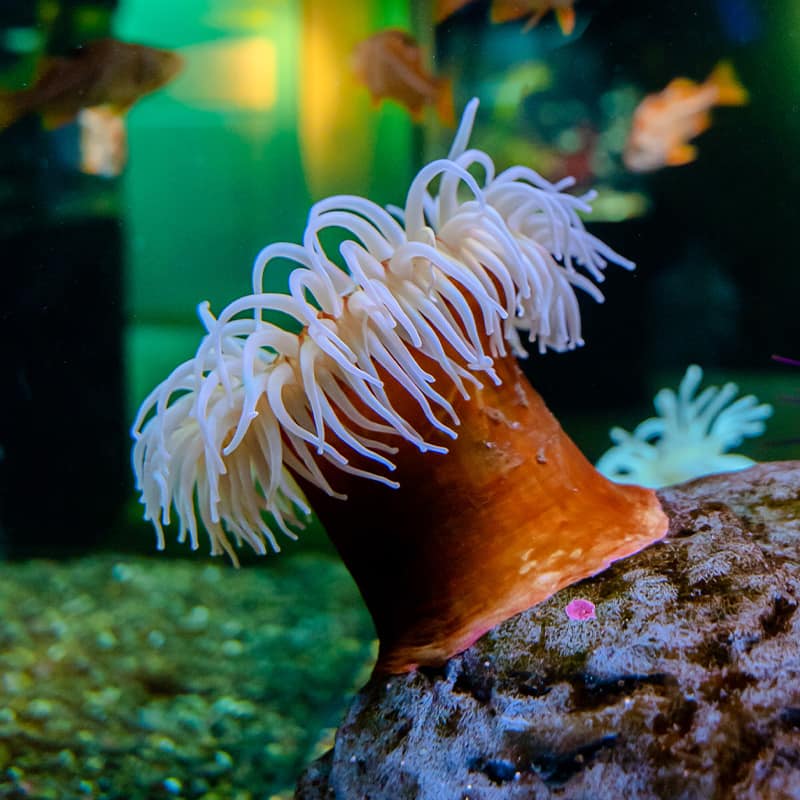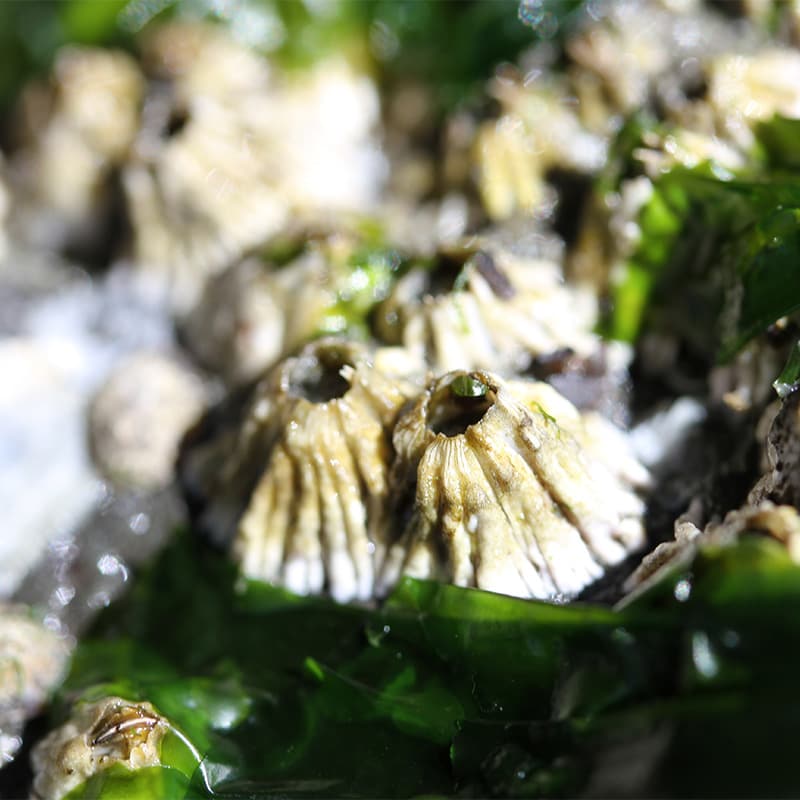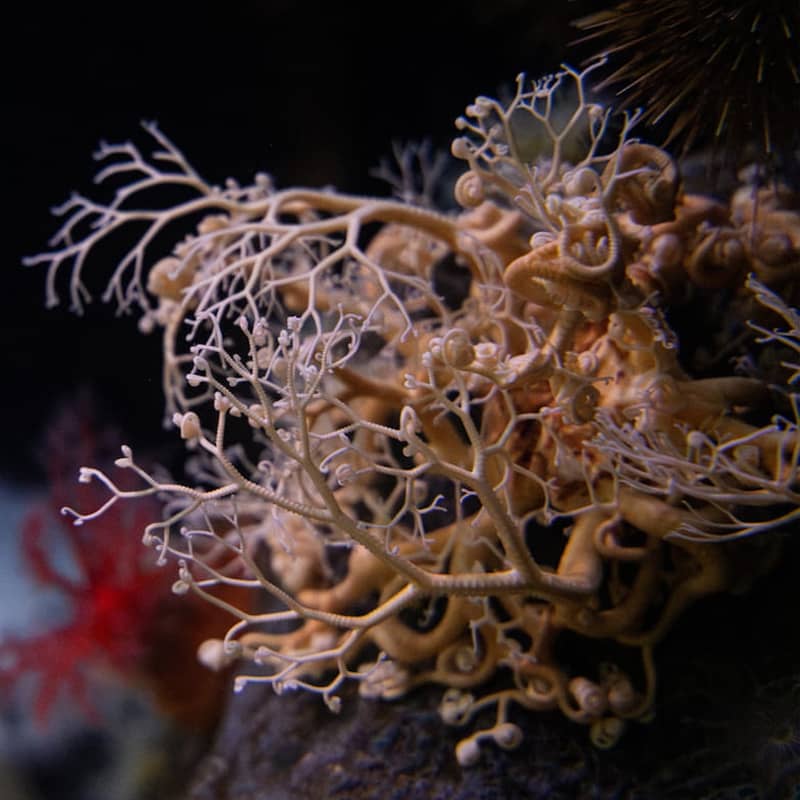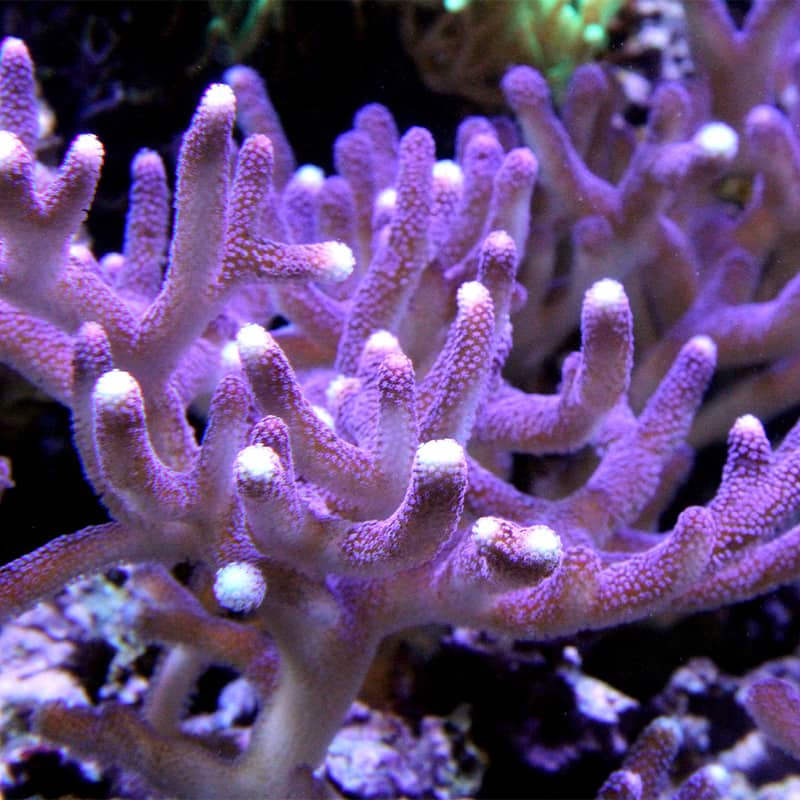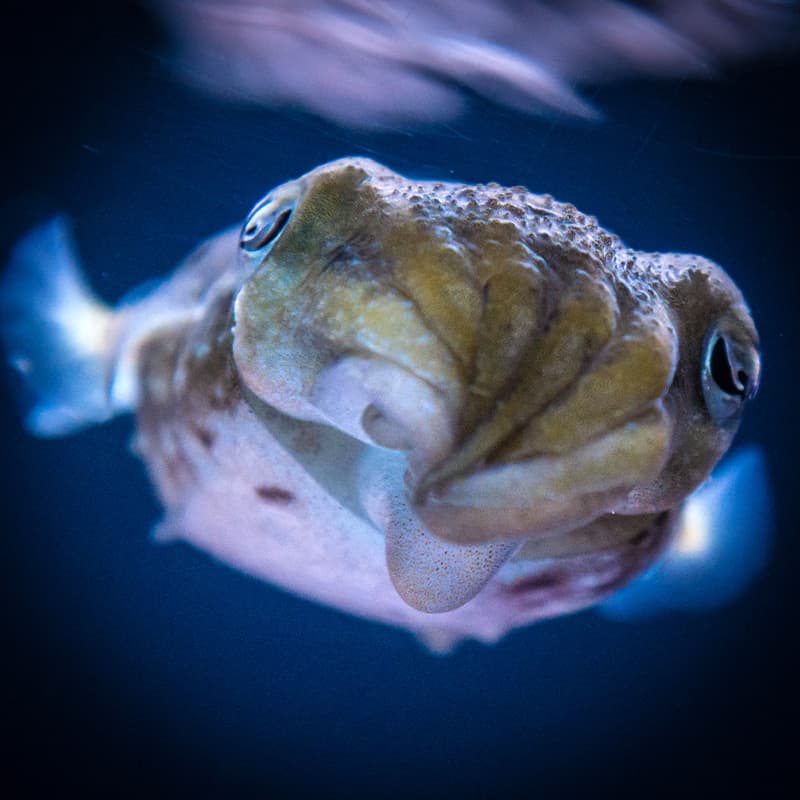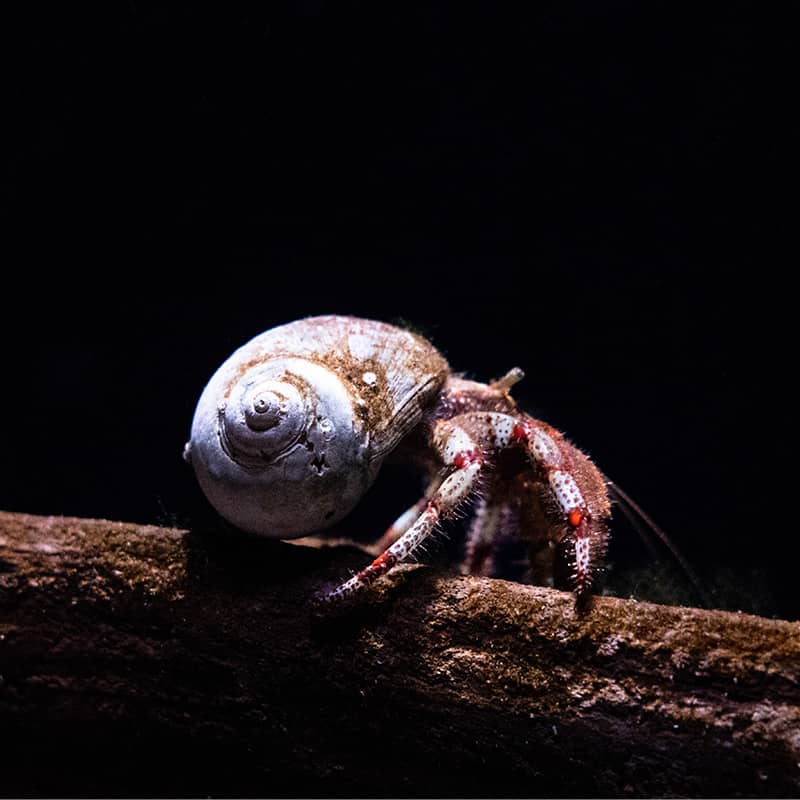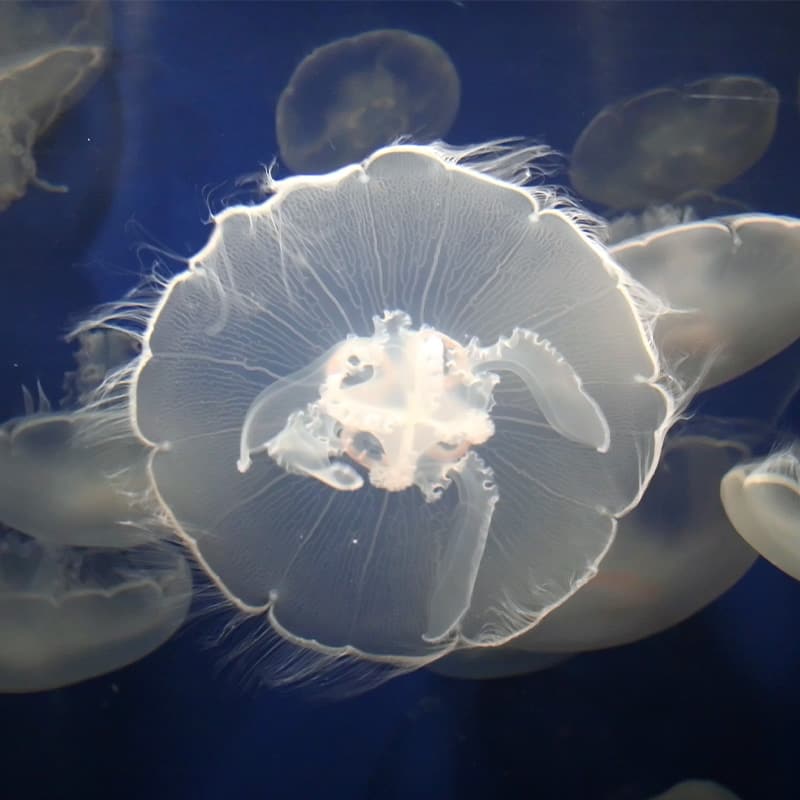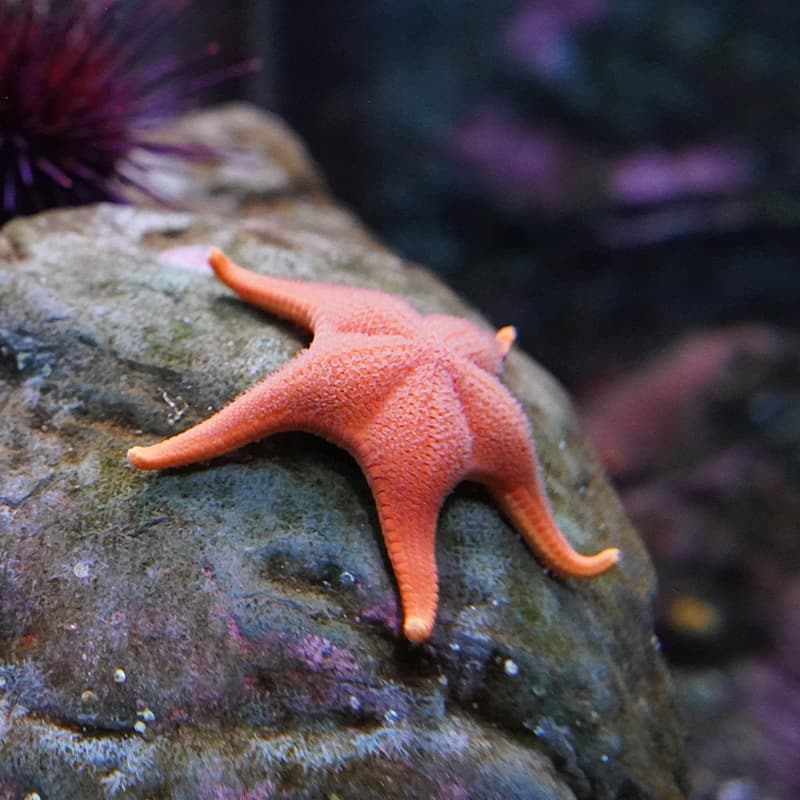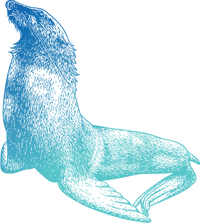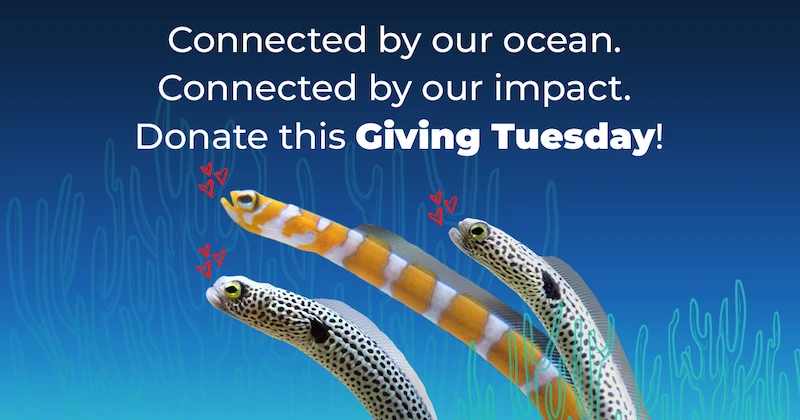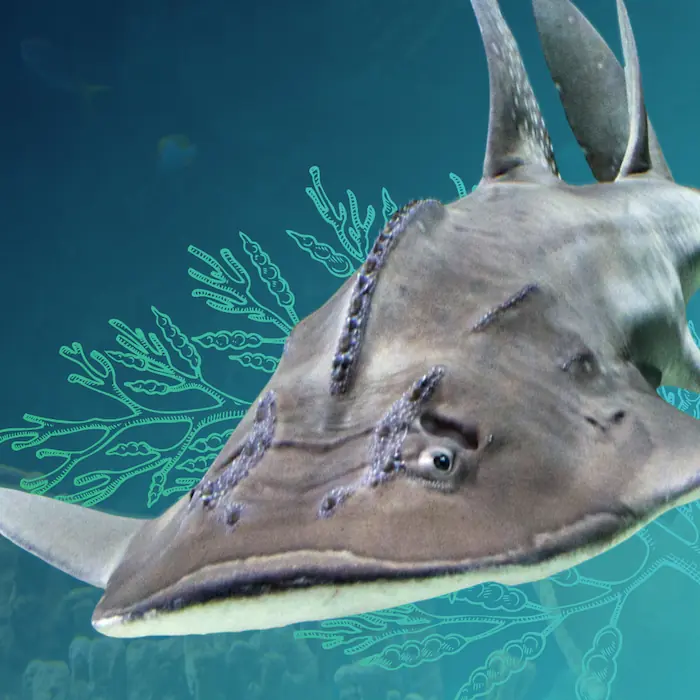- Invertebrates
Giant Pacific octopus
Up close and personal with these surprising cephalopods
Learn more about these graceful, intelligent creatures.
At the Aquarium
- Giant Pacific octopus habitat, Pier 59
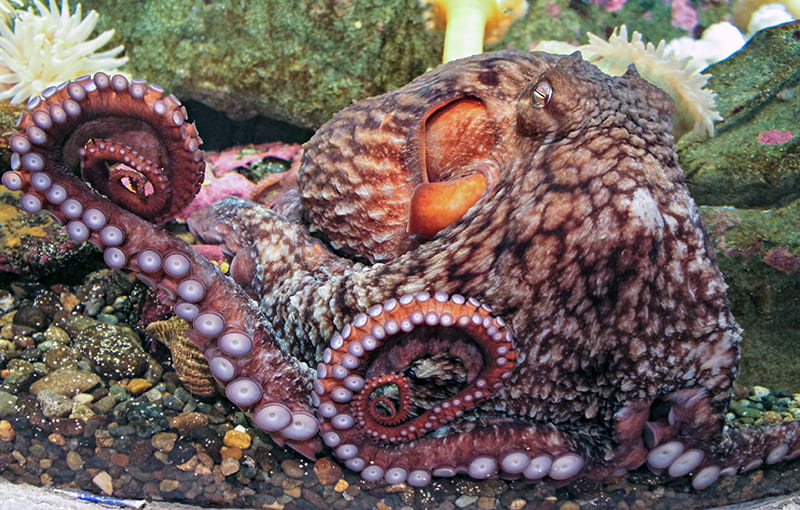
The name says it all
Giant Pacific octopuses live up to their names: They're the largest octopus species in the world! Adults can weigh from 40 to 100 pounds, with a relaxed tip-to-tip dimension of 12–14 feet. Although less common, larger animals weighing up to 160 pounds have been found. An octopus at that weight would have a tip-to-tip measurement of about 25 feet—roughly the height of a two-story building.
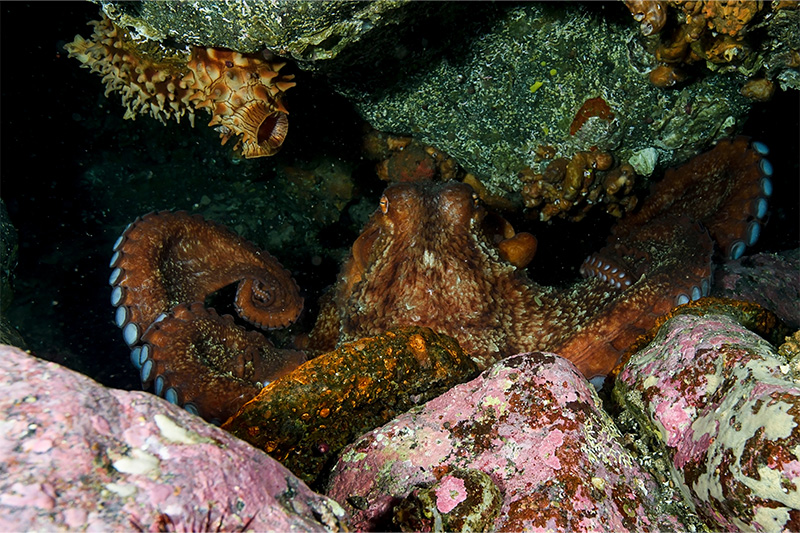
Tiny home trendsetters
These octopuses are den-dwellers by nature: tight, small spaces help them feel secure and comfortable. They’re regularly seen tucked away in their den in the rocks—with piles of discarded shells from previous meals just outside the entrance. They can also squeeze into surprisingly tiny spaces! With their squishy, flexible bodies, their main restriction to moving through a tight space is their beak, which is made of chitin (a substance that functions similarly to keratin, the protein that helps form hair and nails in humans). If their beaks will pass through, the rest of their bodies will as well. It’s possible for a fully grown giant Pacific octopus to fit through a hole the size of a lemon!
Big appetites
Giant Pacific octopuses have huge appetites. Their diets consist of crustaceans (Dungeness crabs are a particular favorite); mollusks such as clams, squid and even other species of octopus; and fish. Giant Pacific octopuses can consume 2–4% and gain 1–2% of their body weight each day. That’s the equivalent of a 150-pound person eating up to six pounds of food and gaining up to three pounds every single day!
Night moves
Generally nocturnal, giant Pacific octopuses move about and do their hunting at night. They use their arms, each covered with approximately 200 suckers, to find and hold their prey. What happens next depends on the type of prey. With fish, the octopus may paralyze their future feast with a toxic saliva, then tear into it with their parrot-like beak. With crabs and shellfish, they may simply pull their prey’s defenses (aka shells) apart to get at the meal within.
Temporary and beloved guests
Each year, the Seattle Aquarium gets a permit from the Washington State Department of Fish and Wildlife to collect a certain number of giant Pacific octopuses to live at the Aquarium, where they help educate our guests about their importance to the local ecosystem. When they show signs that they’re mature and ready to mate—typically after a stay of 12 months or so—our divers return them to their original collection location so they can complete their life cycles and reproduce.
Color control
Giant Pacific octopuses can change color at will, expressing mood, comfort level and intentions to nearby animals. They’re also able to change texture, using knobs of muscle to mimic their surroundings.
Quick facts
Giant Pacific octopuses have blue blood, eight arms and three hearts!
Adult giant Pacific octopuses can weigh from 40 to 100 pounds, with a relaxed tip-to-tip dimension of 12–14 feet.
Their arms have approximately 200 suckers each!
